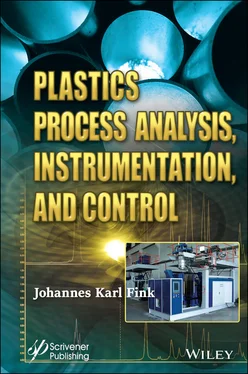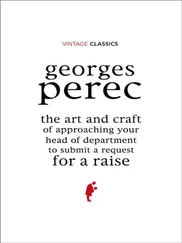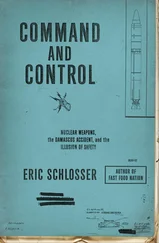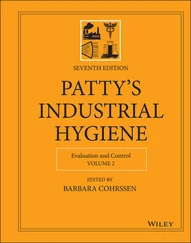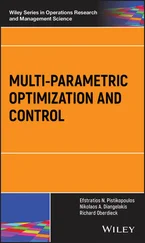1 Cover
2 Title Page
3 Copyright Copyright © 2021 by Scrivener Publishing LLC. All rights reserved. Co-published by John Wiley & Sons, Inc., Hoboken, New Jersey, and Scrivener Publishing LLC, Salem, Massachusetts. Published simultaneously in Canada No part of this publication may be reproduced, stored in a retrieval system, or transmitted in any form or by any means, electronic, mechanical, photocopying, recording, scanning, or otherwise, except as permitted under Section 107 or 108 of the 1976 United States Copyright Act, without either the prior written permission of the Publisher, or authorization through payment of the appropriate per-copy fee to the Copyright Clearance Center, Inc., 222 Rosewood Drive, Danvers, MA 01923, (978) 750-8400, fax (978) 750-4470, or on the web at www.copyright.com . Requests to the Publisher for permission should be addressed to the Permissions Department, John Wiley & Sons, Inc., 111 River Street, Hoboken, NJ 07030, (201) 748-6011, fax (201) 748-6008, or online at http://www.wiley.com/go/permission . Limit of Liability/Disclaimer of Warranty: While the publisher and author have used their best efforts in preparing this book, they make no representations or warranties with respect to the accuracy or completeness of the contents of this book and specifically disclaim any implied warranties of merchantability or fitness for a particular purpose. No warranty may be created or extended by sales representatives or written sales materials. The advice and strategies contained herein may not be suitable for your situation. You should consult with a professional where appropriate. Neither the publisher nor author shall be liable for any loss of profit or any other commercial damages, including but not limited to special, incidental, consequential, or other damages. For general information onour other products and services or for technical support, please contact our Customer Care Department within the United States at (800) 762-2974, outside the United States at (317) 572-3993 or fax (317) 572-4002. Wiley also publishes its books in a variety of electronic formats. Some content that appears in print may not be available in electronic formats. For more information about Wiley products, visit our web site at www.wiley.com . For more information about Scrivener products please visit www.scrivenerpublishing.com . Cover design by Russell Richardson
4 Preface
5 1 General Aspects 1 General Aspects 1.1 Subjects of the Book This book introduces the subject of process analysis, instrumentation and control for modern manufacturing in the plastics industry. Process analysis is the starting point since plastics processing is different from processing of metals, ceramics, and other materials. Plastics materials show an unique behavior in terms of heat transfer, fluid flow, viscoelastic behavior, and a dependence on the previous time, temperature and shear history which determines how the material responds during processing and its end use. Many of the manufacturing processes are continuous or cyclical in nature. The systems are flow systems in which the process variables, such as time, temperature, position, melt and hydraulic pressure, must be controlled to achieve a satisfactory product, which is typically specified by critical dimensions and physical properties which vary with the processing conditions. Instrumentation has to be selected so that it survives the harsh manufacturing environment of high pressures, temperatures and shear rates and yet it has to have a fast response to measure the process dynamics. Many times the measurements have to be in a non-contact mode so as not to disturb the melt or the finished product. Plastics resins are reactive systems. The resins will degrade if the process conditions are not controlled. Analysis of the process allows one to strategize how to minimize degradation and optimize end use properties. Linear systems in which there exists a one-to-one relationship between the input variable and the output response are the easiest to analyze and control. Plastics on the other hand show a nonlinear dependence on part/product cooling which varies with the square of the part thickness, laminar flow which varies with the cube of the wall thickness and mechanical strength/stiffness which varies with the cube of wall thickness. Also, wall thickness influences the crystallization, shrinkage, morphology and critical dimensions of the product. In order to make corrections to the process, actuators, also known as final control elements, must introduce energy to the system. This hardware is in the form of servo valves, solenoid valves, servo motors, heaters, and blowers. The sizing, response time, ruggedness and linearity must be considered. All the above hardware has to be assembled into a system and programmed with a suitable algorithm to carry out automatic control. The control configuration and the algorithm are dictated by the system itself. Common control modes are feedback setpoint control which is common in extrusion, servo control which is common in injection molding and blow molding cyclical processes, and combinations and variations thereof.
1.1 Subjects of the Book 1.2 Special Issues 1.2 Special Issues A simplified, practical, and innovative approach to understand the design and manufacture of plastic products in the World of Plastics has been presented (1). The information defines and focuses on past, current, and future technical trends. This handbook reviews more than 20,000 different subjects. Various plastic materials and their behavior patterns were reviewed. Examples are provided of different plastic products and critical factors relating to them that range from meeting performance requirements in different environments to reducing costs and targeting for zero defects (1).
1.3 Injection Molding 1.4 Miniature Molding Processes 1.5 Computer Determination of Weld Lines in Injection Molding 1.6 Extrusion Blow Molding 1.7 Microcellular Injection Molding 1.8 Mold Cooling 1.9 Microcellular Foam Processing System 1.10 Molding Machine for Granules 1.11 Foam Curing of Footwear 1.12 Injection Compression Molding 1.13 Hot Press System 1.14 Stamper Mold 1.15 Plastic Waste References
6 2 Process Analysis 2.1 Concepts and Strategies 2.2 Linear Systems 2.3 Twin-Screw Extrusion References
7 3 Examples of Process Analysis3.1 Greenhouse Gas Balance 3.2 Injection Molding Technology 3.3 Shrinkage in Injection Molding 3.4 Recycling by Extrusion 3.5 Batch Washing of Recycled Films 3.6 Self-Purging Microwave Pyrolysis 3.7 Purging and Plasticization in Injection Molding 3.8 Hot Runner Systems 3.9 Blown Film Extrusion and Thickness Control 3.10 Residence Time Distribution for Biomass Pyrolysis 3.11 Reactive Extrusion References
8 4 Process Instrumentation4.1 In-Mold Measurement 4.2 Temperature 4.3 Position Transducers 4.4 Composition of Matter 4.5 Medical Issues References
9 5 Actuators and Final Control Elements5.1 Servo Valves 5.2 Servo Motors 5.3 Solenoid Valves 5.4 Heaters 5.5 Drive Motors and Motor Speed Control for Extrusion References
10 6 Analysis of Melt Processing Systems6.1 Process Parameter Determination of Plastic Injection Molding 6.2 Process Parameter Determination of Plastic Injection Molding of LCDs 6.3 Processing History 6.4 Shear History 6.5 Extrusion Product Control 6.6 Extrusion Blow Molding Parison Control 6.7 Injection Molding 6.8 Thermoforming 6.9 Rotomolding 6.10 Compounders References
11 7 Auxiliary Equipment7.1 Crammer Feeder 7.2 Dryers 7.3 Pullers 7.4 Chillers 7.5 Robots References
12 Index
13 End User License Agreement
1 Chapter 1 Figure 1.1 Weldless-type injection mold apparatus (24). Figure 1.2 Heated states during injection molding (24). Figure 1.3 Mold-cooling system (39). Figure 1.4 Induction heating assembly (54). Figure 1.5 Mold thermal controlling device (56). Figure 1.6 Steam cracking process (93).
Читать дальше
